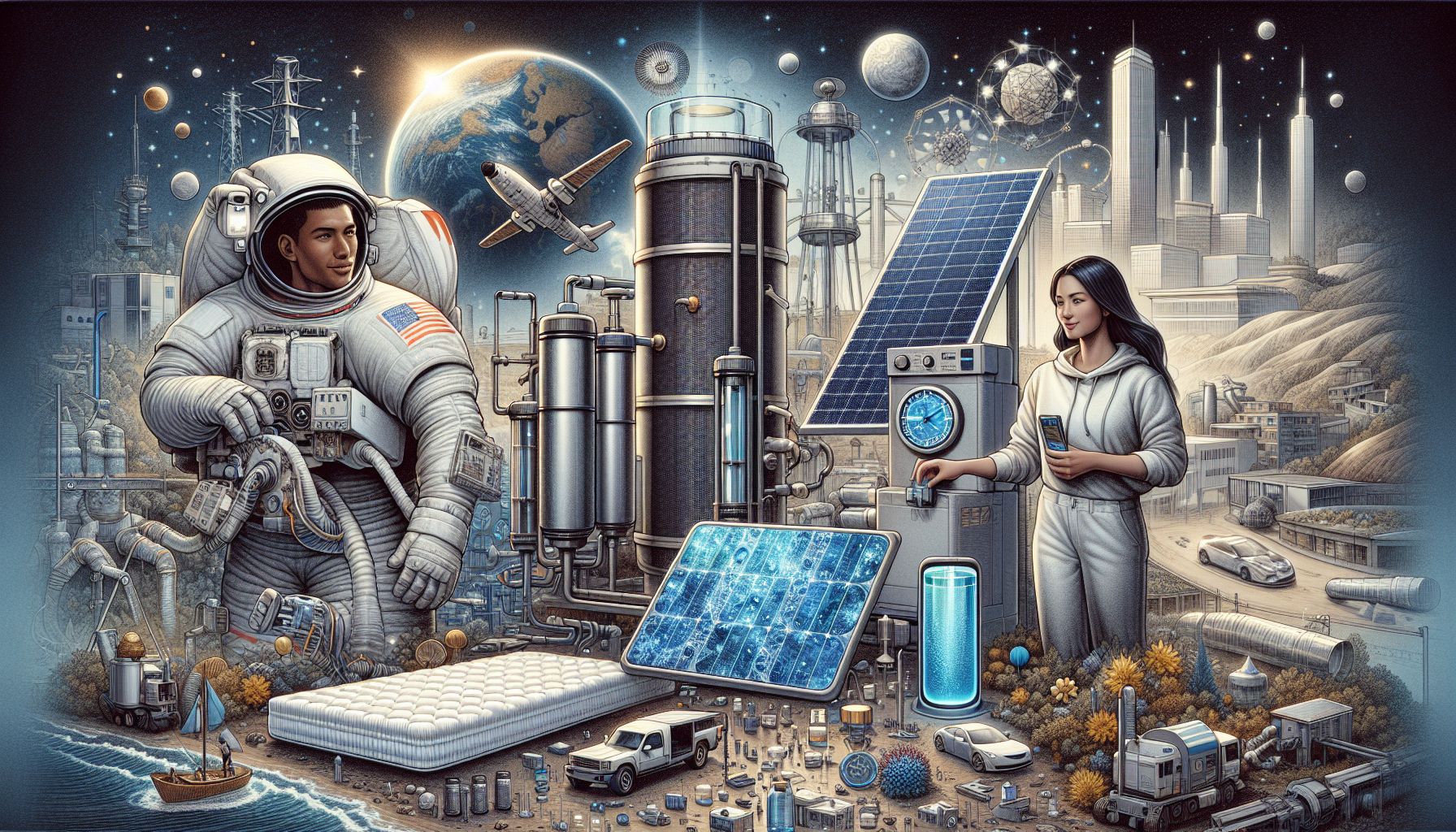📌 Let’s explore the topic in depth and see what insights we can uncover.
⚡ “You might not be an astronaut, but you’re using space technology right now. Uncover the unexpected ways space exploration inventions have revolutionized your everyday life on Earth.”
Did you know that some of the technology you use every day was developed as part of space exploration? The endeavors of NASA and other space agencies have led to the development of numerous inventions that have significantly improved life on Earth. In this blog post, we’ll delve into the fascinating world of space tech and how it has influenced our everyday lives in ways we might not even realize. From the GPS systems we use to navigate our commutes, to the memory foam that ensures a comfortable night’s sleep, many of the conveniences of modern life have their roots in the science of space exploration. Join us on a journey through the cosmos as we explore the inventions that have made the leap from the final frontier to our front door.
🛰️ GPS Technology

Revolutionary Inventions: From Space Exploration to Earthly Life
Imagine trying to navigate a new city without the help of your trusty GPS. Terrifying, right? Well, we have space exploration to thank for this indispensable tool. The Global Positioning System (GPS) used in everything from our smartphones to our cars relies on a network of satellites orbiting Earth. Originally developed for military use, the technology was made available to the public in the 1980s and has since become an integral part of our lives. Space exploration has also significantly improved the accuracy of GPS systems. The atomic clocks aboard GPS satellites, which rely on the vibrations of atoms to keep precise time, were refined through space research. This increased accuracy has made GPS indispensable for everything from aircraft navigation to geocaching adventures.
🧪 Teflon and Velcro
Can you picture a world without non-stick pans and easy fasteners? You might not realize it, but some of the most mundane items in our households were actually born out of space research. Teflon and Velcro are two such everyday innovations that were popularized by space exploration. Teflon, the non-stick coating found on many kitchen utensils, was used by NASA in the Apollo missions. It was originally used to keep heat shields and spacesuits safe from the harsh conditions of space. The heat-resistant and non-stick properties of Teflon made it the perfect choice for cooking utensils, forever changing our breakfast game. As for Velcro, while it wasn’t invented by NASA, its use in space suits and equipment greatly popularized the product. It was used to secure items in zero-gravity situations, and this gave it worldwide exposure and increased its popularity back on Earth.
💤 Memory Foam
NASA didn’t just change the way we cook and fasten things, it also revolutionized the way we sleep. If you’ve ever sunk into a memory foam mattress or pillow, you’ve experienced a technology originally developed for space exploration. Memory foam was invented by NASA in the 1960s to improve seat cushioning and crash protection for airline pilots and passengers. The material was designed to mold to the body in response to heat and pressure, evenly distributing body weight. After being released to the public domain in the 1980s, memory foam was quickly adopted by mattress manufacturers for its comfort and support.
🚒 Fire-Resistant Materials
Firefighters put their lives on the line every day, and their safety gear plays a crucial role in protecting them from danger. The fire-resistant materials used in their suits were actually developed by NASA. When preparing for space missions, NASA needed materials that could withstand the intense heat and flames during rocket launches. The materials developed for these purposes have since found their way into firefighter gear, offering better protection and saving countless lives.
🚀 Scratch-Resistant Lenses
Ever wondered how your eyeglasses manage to stay scratch-free even after years of use? You can thank space exploration for that. NASA developed a special coating for astronaut helmet visors to protect against the harsh space environment which included dust and cosmic rays. This technology was later adopted by eyewear manufacturers to create scratch-resistant lenses. 🧭 ## Conclusion The vastness of space has always intrigued mankind. But as we delve deeper into the cosmos, we’re not just learning about distant galaxies and alien worlds. We’re also uncovering innovative technologies that make life on Earth better. Space exploration has given us more than just breathtaking images of the cosmos. It has spurred technological advancements that permeate our daily lives, from the convenience of GPS navigation to the comfort of memory foam mattresses. As we continue to explore the final frontier, who knows what other life-changing inventions we might discover? So, the next time you use your GPS, fasten something with Velcro or cook with a non-stick pan, remember to thank the stars – quite literally!
🤖 Stay tuned as we decode the future of innovation!
